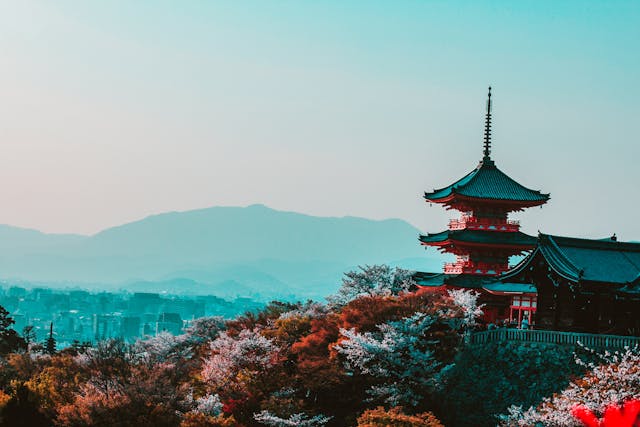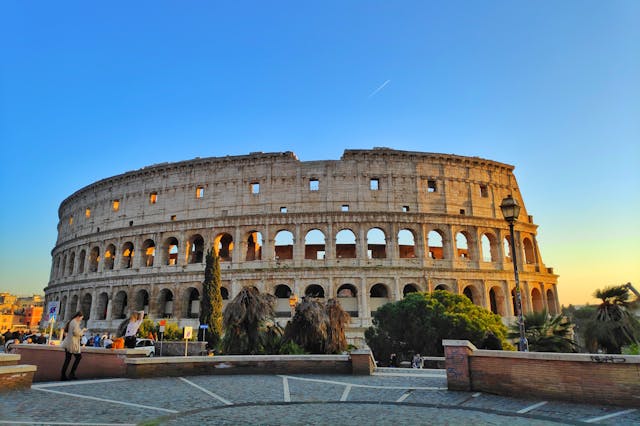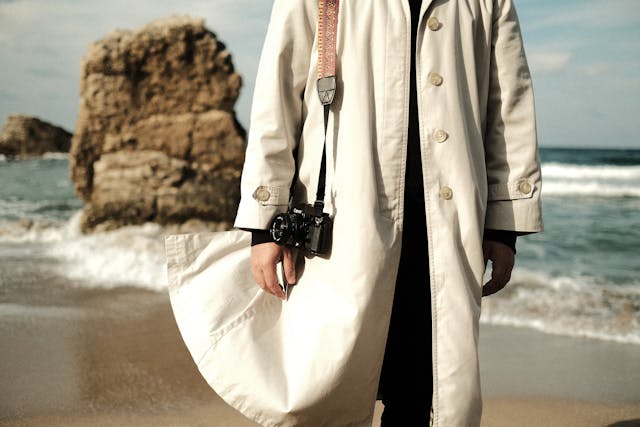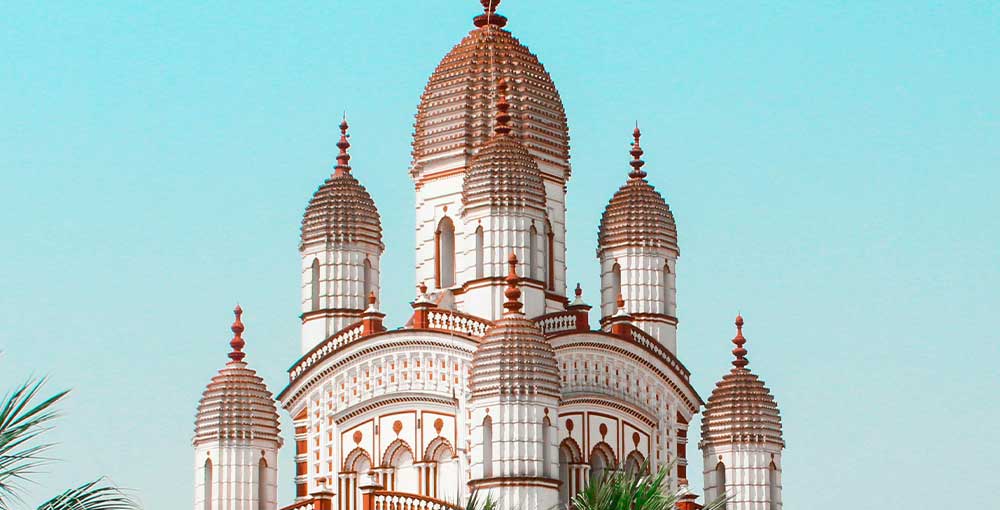Planning your Kyoto itinerary doesn’t have to be overwhelming. This guide helps you make the most of your trip, whether you have 3, 5, or 7 days to explore. Kyoto is full of history and culture, from the famous Fushimi Inari Shrine with its torii gates to the peaceful Kinkaku-ji gardens.
You can walk through the serene Arashiyama Bamboo Grove, visit traditional markets, and even take day trips to nearby Nara or Uji. No matter how long you stay, this itinerary ensures you experience Kyoto’s best sights and hidden gems. Let’s get started!

3-Day Kyoto Itinerary
Day 1: Fushimi Inari, Kiyomizu-dera, and Gion
Start your trip with one of Kyoto’s most iconic spots, Fushimi Inari Shrine. The thousands of red torii gates here will amaze you, and it’s a great way to get in touch with Kyoto’s spiritual side. Take your time walking through the gates, it’s a peaceful experience. Afterward, head to Kiyomizu-dera Temple. You’ll get some fantastic views of the city from here, and it’s a perfect spot for photos. The temple is large, so spend a couple of hours wandering around. In the afternoon, head over to Gion, Kyoto’s famous geisha district. Stroll through the narrow streets and enjoy the traditional wooden houses. If you’re lucky, you might even spot a geisha on her way to work.
Day 2: Arashiyama, Bamboo Grove, and Tenryu-ji Temple
On your second day, head to the Arashiyama district. Start with the Arashiyama Bamboo Grove, one of the most photographed spots in Kyoto. It’s best to visit early in the morning before the crowds arrive. From there, visit Tenryu-ji Temple, a UNESCO World Heritage site. Its garden is especially beautiful in autumn, and it’s a peaceful place to sit and reflect. For lunch, explore the local shops and cafes in the area, many offering traditional Japanese dishes. Afterward, take a stroll along the Togetsukyo Bridge for stunning river views.
Day 3: Kinkaku-ji, Ryoan-ji, and Nishiki Market
On your final day, visit Kinkaku-ji, also known as the Golden Pavilion. It’s one of Kyoto’s most famous landmarks, and the golden reflection on the water is breathtaking. Not too far from Kinkaku-ji is Ryoan-ji Temple, known for its Zen rock garden. Spend some time contemplating the minimalist beauty of the garden. In the afternoon, head to Nishiki Market in central Kyoto. This market is perfect for trying different local foods and shopping for souvenirs. It’s lively, full of small stalls, and a great place to grab some last-minute gifts.
Summarized Itinerary
| Day | Activities |
|---|---|
| Day 1: Fushimi Inari, Kiyomizu-dera, and Gion | Visit Fushimi Inari Shrine, explore Kiyomizu-dera Temple, and stroll through Gion’s old streets. |
| Day 2: Arashiyama, Bamboo Grove, and Tenryu-ji Temple | Walk through the Bamboo Grove, visit Tenryu-ji Temple, and cross Togetsukyo Bridge. |
| Day 3: Kinkaku-ji, Ryoan-ji, and Nishiki Market | See the Golden Pavilion, visit the Zen garden at Ryoan-ji, and explore Nishiki Market. |
5-Day Kyoto Itinerary
Day 1: Fushimi Inari, Kiyomizu-dera, and Gion
Start the same as the 3-day itinerary, with a visit to Fushimi Inari Shrine. Walk through the torii gates and enjoy the tranquility. After that, head to Kiyomizu-dera Temple. The views are worth the walk, and the architecture is stunning. Finish the day in Gion, where you can explore the old streets and maybe see a geisha.
Day 2: Arashiyama, Bamboo Grove, and Tenryu-ji Temple
Spend your second day in Arashiyama. Start early at the Bamboo Grove, then visit Tenryu-ji Temple and its beautiful garden. Take your time exploring the area, maybe renting a bicycle to see more of Arashiyama’s quiet charm. Don’t forget to cross Togetsukyo Bridge for some great views.
Day 3: Kinkaku-ji, Ryoan-ji, and Kyoto Imperial Palace
Visit Kinkaku-ji, the Golden Pavilion, in the morning. It’s one of Kyoto’s must-sees, and the golden temple is even more stunning in person. Afterward, stop by Ryoan-ji to see its famous rock garden. In the afternoon, visit the Kyoto Imperial Palace, where you can walk around the beautiful grounds and gardens. The history here is fascinating, and you can learn more about Kyoto’s imperial past.
Day 4: Nara Day Trip
Take a day trip to Nara, only about an hour away by train. Nara is famous for its friendly, free-roaming deer. Visit Todai-ji Temple, home to the Great Buddha statue. It’s a large, impressive temple, and the deer outside make for a unique experience. Wander through Nara Park, and don’t miss Kasuga Taisha Shrine with its hundreds of stone lanterns.
Day 5: Nishiki Market and Pontocho Alley
On your last day, visit Nishiki Market for some shopping and local food. It’s a lively place where you can try everything from fresh seafood to sweets. In the evening, explore Pontocho Alley. This narrow street is known for its traditional restaurants and is especially beautiful at night. Enjoy a final meal in Kyoto, taking in the ambiance of this historic city.
Summarized Itinerary
| Day | Activities |
|---|---|
| Day 1: Fushimi Inari, Kiyomizu-dera, and Gion | Visit Fushimi Inari Shrine, explore Kiyomizu-dera Temple, and stroll through Gion. |
| Day 2: Arashiyama, Bamboo Grove, and Tenryu-ji Temple | Walk through the Bamboo Grove, visit Tenryu-ji Temple, and cross Togetsukyo Bridge. |
| Day 3: Kinkaku-ji, Ryoan-ji, and Kyoto Imperial Palace | See the Golden Pavilion, visit Ryoan-ji’s Zen garden, and explore the Kyoto Imperial Palace. |
| Day 4: Nara Day Trip | Visit Todai-ji Temple, feed the deer in Nara Park, and explore Kasuga Taisha Shrine. |
| Day 5: Nishiki Market and Pontocho Alley | Explore Nishiki Market and enjoy dinner at Pontocho Alley. |
7-Day Kyoto Itinerary
Day 1: Fushimi Inari, Kiyomizu-dera, and Gion
Start with Kyoto’s iconic Fushimi Inari Shrine. Take a leisurely walk through the red torii gates, soaking up the peaceful atmosphere. Afterward, visit Kiyomizu-dera Temple. The views here are worth the climb, and the temple is an excellent introduction to Kyoto’s cultural heritage. End the day exploring the traditional streets of Gion, keeping an eye out for geisha.
Day 2: Arashiyama, Bamboo Grove, and Tenryu-ji Temple
On your second day, spend time in Arashiyama. Walk through the Bamboo Grove early in the morning, then visit Tenryu-ji Temple. Explore the temple’s Zen garden, and afterward, take a walk along the Togetsukyo Bridge for scenic river views. The area is perfect for a slower, more relaxed day.
Day 3: Kinkaku-ji, Ryoan-ji, and Kyoto Imperial Palace
Visit Kinkaku-ji (the Golden Pavilion) in the morning to see one of Kyoto’s most famous sights. Afterward, head to Ryoan-ji Temple to see its Zen rock garden, a quiet place for reflection. In the afternoon, explore the Kyoto Imperial Palace and its surrounding park. Learn about the history of Kyoto and take a peaceful stroll through the gardens.
Day 4: Nara Day Trip
Take a day trip to Nara, about an hour from Kyoto. Visit Todai-ji Temple to see the massive Buddha statue. Spend time wandering through Nara Park, where deer roam freely. Stop by Kasuga Taisha Shrine before heading back to Kyoto in the evening.
Day 5: Day Trip to Uji
On your fifth day, take a trip to Uji, famous for its tea. Visit Byodo-in Temple, a beautiful site with historical significance. While in Uji, make sure to try some matcha-based desserts or drinks, as the town is known for producing high-quality green tea. Walk along the river and enjoy the peaceful surroundings before returning to Kyoto.
Day 6: Philosopher’s Path and Silver Pavilion
Spend your sixth day exploring the Philosopher’s Path, a lovely walking route along a canal lined with cherry trees. Along the way, you’ll find smaller temples and shrines, which are less crowded but equally beautiful. End your walk at the Ginkaku-ji (Silver Pavilion), known for its Zen gardens and peaceful atmosphere.
Day 7: Nishiki Market and Pontocho Alley
For your final day in Kyoto, visit Nishiki Market. It’s the perfect place to try local delicacies and buy unique souvenirs. The market is lively and offers everything from fresh seafood to sweets. In the evening, head to Pontocho Alley, a narrow street lined with traditional restaurants. It’s an excellent place for your last dinner in Kyoto, with a view of the river and lantern-lit alleys.
Summarized Itinerary
| Day | Activities |
|---|---|
| Day 1: Fushimi Inari, Kiyomizu-dera, and Gion | Visit Fushimi Inari Shrine, explore Kiyomizu-dera Temple, and stroll through Gion. |
| Day 2: Arashiyama, Bamboo Grove, and Tenryu-ji Temple | Walk through the Bamboo Grove, visit Tenryu-ji Temple, and cross Togetsukyo Bridge. |
| Day 3: Kinkaku-ji, Ryoan-ji, and Kyoto Imperial Palace | See the Golden Pavilion, visit Ryoan-ji’s Zen garden, and explore Kyoto Imperial Palace. |
| Day 4: Nara Day Trip | Visit Todai-ji Temple, feed the deer, and explore Kasuga Taisha Shrine in Nara. |
| Day 5: Day Trip to Uji | Explore Byodo-in Temple in Uji and enjoy local matcha desserts. |
| Day 6: Philosopher’s Path and Silver Pavilion | Walk along the Philosopher’s Path and visit the Silver Pavilion (Ginkaku-ji). |
| Day 7: Nishiki Market and Pontocho Alley | Shop at Nishiki Market and have dinner at Pontocho Alley. |
Practical Tips for Visiting Kyoto
Visiting Kyoto can be a smooth experience if you’re well-prepared. One of the most important things to remember is that Kyoto can get quite busy, especially during the cherry blossom season (March-April) and autumn (November). If you’re visiting during these times, try to get to popular attractions early in the day to avoid the crowds. Also, Kyoto is best explored on foot or by bike. While the bus system is reliable and easy to use, walking through Kyoto’s quiet streets gives you a better feel of the city’s charm.
When visiting temples or shrines, dress modestly, covering your shoulders and knees. Always be mindful of the signs indicating whether photography is allowed. Also, many temples charge a small entrance fee, so carrying cash is helpful. ATMs in convenience stores are widely available and are a good place to withdraw money, as credit cards are not accepted everywhere.
Another tip is to take advantage of Kyoto’s train system for day trips. The JR line can take you to nearby cities like Nara and Osaka quickly, so it’s worth considering if you’re planning a longer stay. Lastly, if you can, rent a pocket Wi-Fi device or get a local SIM card for your phone. This will make it easier to navigate the city and use translation apps if needed.
Kyoto’s Culture and History
Kyoto was Japan’s capital for over 1,000 years and remains a center of traditional Japanese culture today. Many of the customs and rituals practiced here have been preserved for centuries. You’ll find tea ceremonies, geisha performances, and festivals that have been celebrated in Kyoto for generations. In fact, Kyoto is one of the few places where you can still spot geishas walking to and from their performances in the Gion district.
Buddhism and Shintoism play a significant role in Kyoto’s culture, as evident by the numerous temples and shrines scattered throughout the city. The Fushimi Inari Shrine, with its thousands of red torii gates, is a major Shinto site, while Kinkaku-ji (the Golden Pavilion) and Ryoan-ji (famous for its rock garden) reflect Buddhist traditions.
In Kyoto, you’ll also find strong links to the samurai era. The Nijo Castle, once a home of Tokugawa Ieyasu, is an excellent place to see the elegance of feudal Japan. The city is also deeply connected to traditional arts like calligraphy, flower arranging, and kimono-making, which are still practiced and taught in Kyoto today. The blend of spiritual, historical, and cultural heritage makes Kyoto a rich and unique destination.
Also read: Private Yoga Day Trip from Kathmandu with Transfers
Food and Restaurants in Kyoto
Kyoto’s food scene is rich in tradition, with a focus on simplicity and seasonal ingredients. One of the must-try meals in Kyoto is kaiseki, a multi-course dinner that highlights the best of seasonal Japanese cuisine. You can find high-end kaiseki restaurants throughout the city, but for a more affordable option, many ryokan (traditional inns) offer kaiseki dinners to their guests.
Another local favorite is yudofu, a simple but delicious tofu hot pot often served in temple restaurants like those near Nanzen-ji. Kyoto is also known for its sweets, especially wagashi, delicate confections made from sweetened bean paste and other ingredients, often enjoyed during a tea ceremony.
If you’re in the mood for street food, head to Nishiki Market, also known as “Kyoto’s kitchen.” Here you can find a variety of food stalls selling everything from skewered meats to fresh seafood. You can try delicacies like matcha-flavored treats, soy milk doughnuts, and even sushi made with mackerel (saba sushi), a Kyoto specialty.
For those looking for a more casual meal, Kyoto also offers great ramen shops. You can’t leave without trying a bowl of thick, rich Kyoto-style ramen, known for its heavier broth and thicker noodles. Many restaurants near Kyoto Station serve delicious bowls of ramen that will warm you up, especially during colder months.
Transportation in Kyoto
Getting around Kyoto is relatively easy, thanks to its excellent public transport system. The city is served by buses, trains, and subways, all of which are convenient and reliable. The bus system is particularly useful for tourists, as it reaches most of Kyoto’s major attractions. You can purchase a day pass for unlimited rides, which is ideal if you plan on hopping from temple to temple. The buses can get crowded during peak times, but they’re a great way to see the city.
Kyoto’s subway system is smaller, with only two lines, but it’s fast and efficient. The Karasuma Line runs north to south, while the Tozai Line runs east to west. It’s especially handy if you’re staying near Kyoto Station or heading to the downtown area.
For short distances, walking is the best way to experience Kyoto. Many of the temples and sights are located close to one another, making it easy to stroll between them. For a more local experience, consider renting a bike. Kyoto is a bike-friendly city with many cycling paths, and renting a bike for the day is inexpensive.
If you’re traveling beyond Kyoto, the JR trains are your best option. The JR Sagano Line is perfect for trips to the Arashiyama district, while the JR Nara Line can take you directly to Nara for a day trip. You can use your JR Pass on these lines, so it’s a cost-effective way to travel if you already have the pass.
Taxis are also available in Kyoto, but they can be expensive compared to public transport. However, they can be useful if you’re traveling with a lot of luggage or in a group. Many taxi drivers in Kyoto speak basic English, so you won’t have trouble getting to your destination.
Conclusion
Kyoto offers a unique blend of tradition and modernity, making it one of the most fascinating cities in Japan. Whether you’re spending three, five, or seven days here, this Kyoto itinerary ensures you’ll experience the best the city has to offer. From the serene temples and shrines to the vibrant food markets and traditional tea houses, Kyoto’s charm is undeniable. Don’t rush through your visit; take the time to soak in the rich culture and history that make Kyoto so special. Safe travels!
Also read: Malta Itinerary: The Perfect Way to Spend 3, 5, or 7 Days in Malta
FAQ
What is the best time to visit Kyoto?
The best time to visit Kyoto is during the cherry blossom season in March-April and the autumn foliage season in November. Both times offer stunning scenery, but can also be crowded.
How many days do I need to explore Kyoto?
Kyoto can be enjoyed in 3, 5, or 7 days, depending on how deep you want to dive into the city’s culture. A 3-day visit covers highlights, while 7 days allow for deeper exploration and day trips.
What should I wear when visiting temples in Kyoto?
When visiting temples or shrines, it’s respectful to dress modestly. Ensure your shoulders and knees are covered. Comfortable shoes are also essential since you’ll be doing a lot of walking.
How can I get around Kyoto?
Kyoto is easy to navigate via its bus system, trains, and on foot. The city also offers bike rentals, which are a great way to explore at a leisurely pace.
What are must-try foods in Kyoto?
Don’t miss Kyoto’s kaiseki meals, yudofu (tofu hot pot), matcha sweets, and ramen. Nishiki Market offers a range of street food options, from sushi to tempura.
Is Kyoto family-friendly?
Yes, Kyoto is great for families. Many temples and parks have open spaces for kids to explore. Arashiyama Bamboo Grove and the Kyoto Railway Museum are fun for all ages.
Are credit cards accepted in Kyoto?
Credit cards are accepted at many larger restaurants and shops, but smaller establishments and temples may only accept cash. It’s good to have cash on hand, especially for entrance fees and small purchases.
Can I do day trips from Kyoto?
Yes, Kyoto is a great base for day trips to places like Nara, Osaka, and Arashiyama. The JR train network makes it easy to reach these destinations.
Do I need to book accommodations in advance?
It’s highly recommended to book accommodations in advance, especially during the peak seasons (cherry blossoms and autumn foliage) when hotels and ryokan fill up quickly.
Is Kyoto accessible for non-Japanese speakers?
Kyoto is quite tourist-friendly, with English signage at most major attractions and public transport stations. Many restaurants also have English menus or picture menus to help.
Things to do in Kyoto

|
Kyoto 1 Day Charter Car Tour from Osaka or Kyoto
– $504.40 Great option if you have just one day in Kyoto. Choose between a fixed or flexible itinerary. Private group up to 8 people. |

|
Private Kyoto Custom One Day Tour by Chartered Vehicle
– $963.33 Explore Kyoto in comfort with a private vehicle and choose your must-see spots. Perfect for families or groups. |

|
One Day Tour in Kyoto Including 4 Highlights
– $255.88 Visit Kiyomizu Temple, Nijo Castle, and Fushimi Inari. Stop at Nishiki Market and explore the historic Gion district. |

|
7-Day The Best of Japan: Tokyo, Kyoto, and Osaka Highlights Tour
– $1,845.00 Experience Japan’s top highlights in 7 days, from Tokyo to Kyoto, with stops at Mount Fuji and Osaka. |

|
Private Nara Tour with Licensed Guide & Vehicle (Kyoto Departure)
– $1,063.20 Visit Nara’s temples and gardens with a private guide. Customize the itinerary and explore the peaceful, deer-filled area. |
This blog post may contain affiliate links. If you click on one and make a purchase, I may earn a small commission at no extra cost to you.



